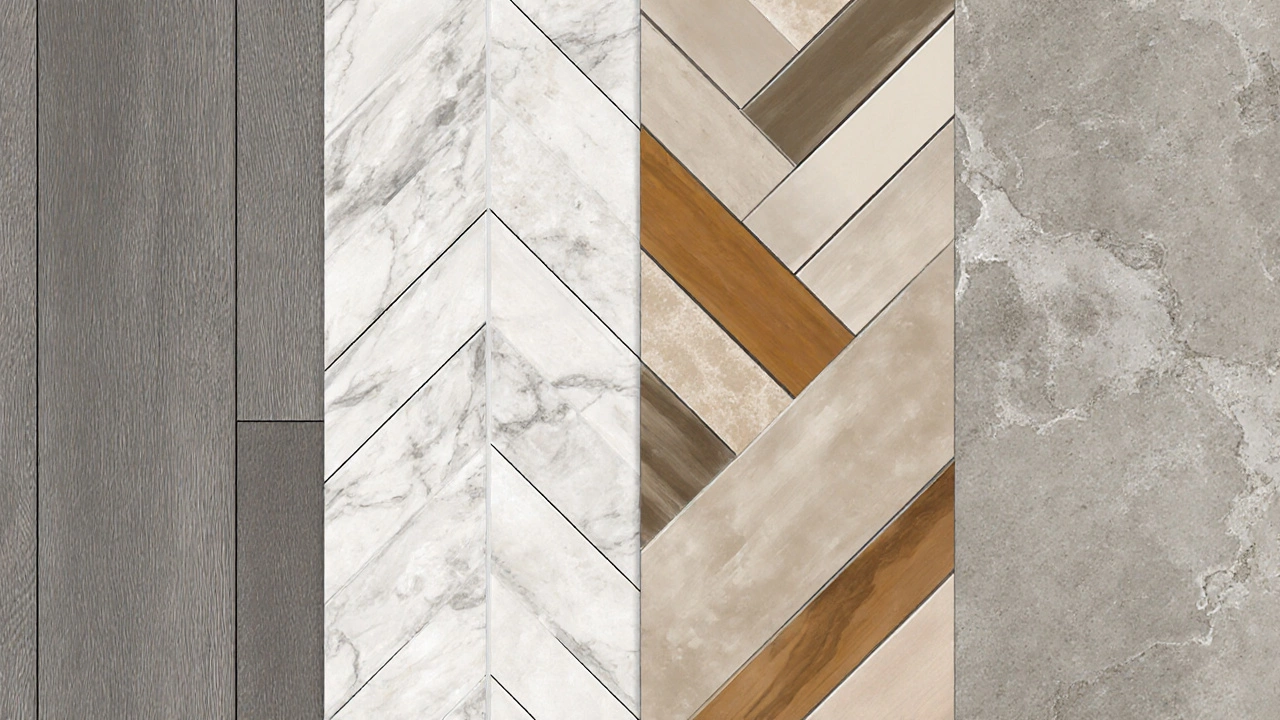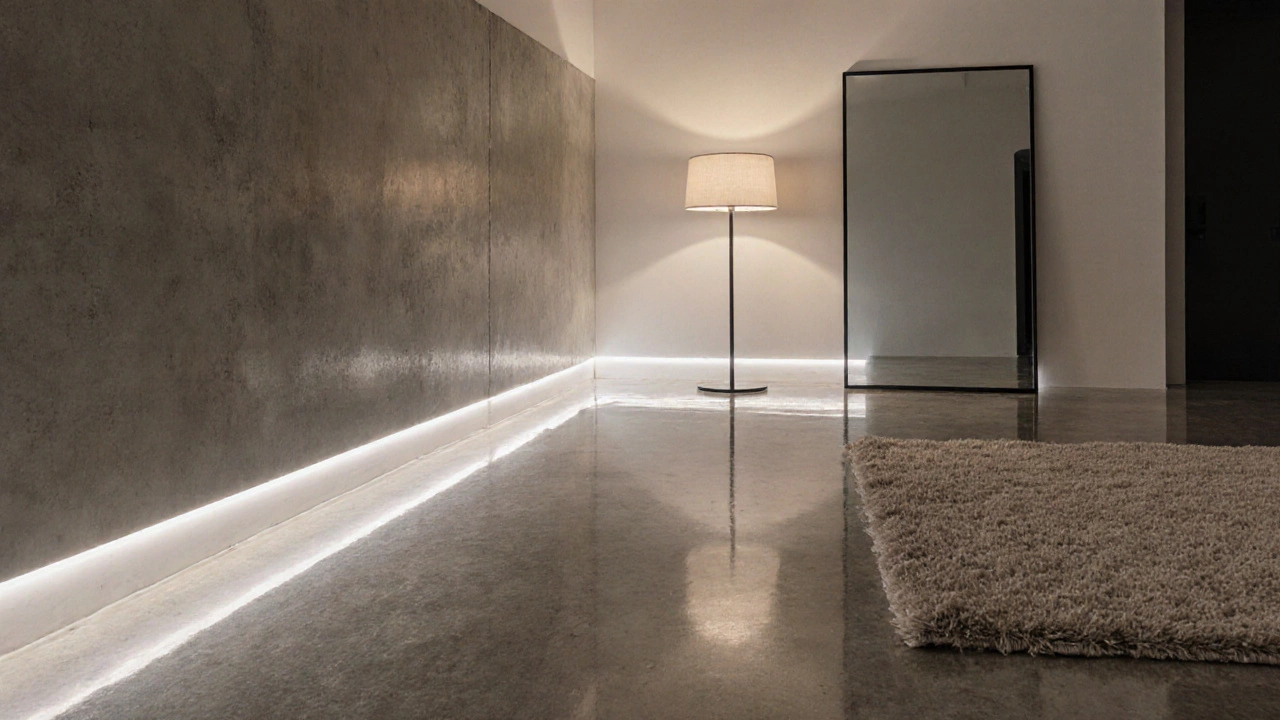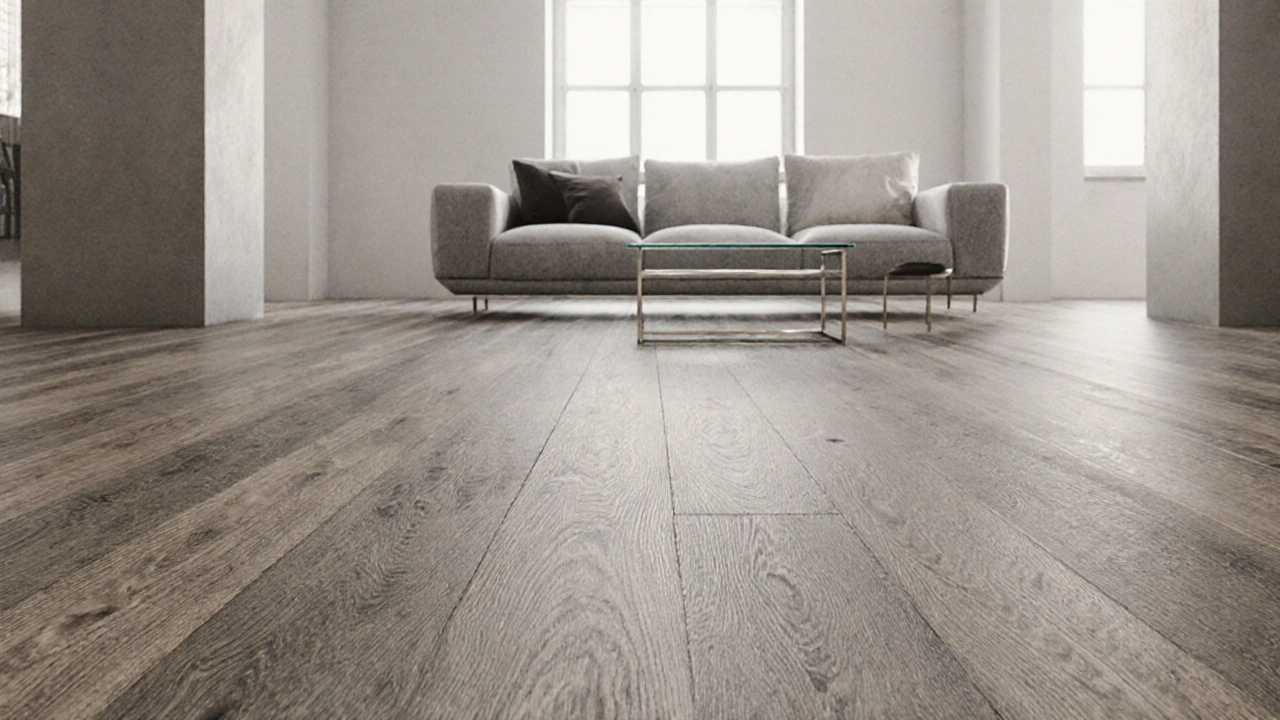Flooring Cost Calculator
Calculate Your Flooring Cost
Cost Breakdown
Enter your room dimensions and flooring choice to see cost estimates
Luxury flooring is a style of floor covering that looks high‑end-think rich textures, glossy finishes, and thoughtful details-yet can be achieved with smart choices and cost‑saving tricks. Many homeowners wonder how to make their floor look expensive, and the answer lies in material selection, color palette, lighting, and subtle design tricks.
Pick the right material
Even before you think about paint or rugs, the base material sets the tone. Below are the most popular options that can give a pricey vibe.
Hardwood flooring is a classic choice that instantly adds warmth and elegance. Wide planks, matte finishes, or a subtle gray wash can make the space feel like a modern loft.
Engineered wood mimics solid hardwood but costs less and handles moisture better-ideal for basements or first floors.
Luxury vinyl tile (LVT) has come a long way. Today’s LVT can replicate natural stone, marble, or hand‑scraped wood with convincing realism while staying budget‑friendly.
Porcelain tile offers a sleek, polished look that mimics marble or concrete. Large format tiles reduce grout lines, creating a clean, high‑end appearance.
Polished concrete gives an industrial chic vibe. When sealed and polished, it reflects light like stone and can be stained to add warm tones.
Finish and texture matter
A dull floor can ruin even the fanciest material. Choose finishes that catch the eye.
- Matte or satin finishes hide scratches and add depth.
- Glossy finishes reflect light, making smaller rooms feel larger.
- Hand‑scraped or distressed textures add character without the price tag of hand‑crafted wood.
For LVT and porcelain, look for a high‑gloss coating or a subtle matte that mimics natural stone.
Play with colour and pattern
Neutral palettes-soft greys, warm taupes, or muted beiges-are hallmarks of upscale design. Pair them with a darker border or a contrasting inlay to create visual interest.
Geometric patterns, such as herringbone or chevron, instantly upgrade a flat surface. You can achieve this look with thin strips of hardwood, LVT, or even painted stencils on concrete.
Add layers for depth
Strategic layering turns a plain floor into a design statement.
- Place a large, low‑pile rug in a coordinating colour to define seating areas.
- Use a runner in a contrasting hue to highlight a hallway.
- Layer a thin carpet tile over LVT for a soft underfoot feel while keeping the visual of the underlying material.

Lighting and accessories
Floor lighting can make a huge difference. Position floor lamps or LED strips near the edges to emphasize the floor’s texture. A well‑placed mirror will bounce light across the surface, creating a brighter, more luxurious environment.
Installation tricks that save money
Professional installation adds cost, but a few DIY tricks can keep expenses down without sacrificing quality.
- Use a click‑lock system for LVT or engineered wood; it’s straightforward and doesn’t require glue.
- Lay down a quality Floor underlayment provides sound dampening and moisture protection to improve comfort and extend lifespan.
- Consider Radiant heating works well under tile, concrete, and engineered wood, adding a premium feel while you’re already pulling up the old floor.
Comparison of popular upscale flooring options
| Material | Cost ($/sq ft) | Typical appearance | Maintenance | Best for |
|---|---|---|---|---|
| Hardwood | 8-12 | Warm, natural grain | Periodic refinishing | Living rooms, bedrooms |
| Engineered wood | 6-10 | Same as hardwood, more stable | Dry‑mop, occasional sanding | Basements, first floors |
| Luxury vinyl tile | 2-5 | Stone or wood look, high gloss | Simple mop | Kitchens, bathrooms |
| Porcelain tile | 4-8 | Polished stone, sleek | Grout cleaning, seal | Bathrooms, entryways |
| Polished concrete | 3-6 | Industrial, high shine | Seal and occasional dust mop | Modern lofts, open plans |

Common pitfalls and how to avoid them
Even with the best plan, small mistakes can ruin the upscale vibe.
- Skipping a proper underlayment leads to squeaks and uneven wear.
- Choosing a glossy finish in a high‑traffic area may show scratches quickly; opt for a low‑gloss in those zones.
- Over‑patterning: stick to one bold pattern per room to avoid visual chaos.
Putting it all together
Here’s a quick checklist to walk you through the process:
- Decide on a primary material (hardwood, LVT, etc.).
- Select a finish that matches your lifestyle.
- Plan colour and pattern-keep it neutral with a single accent.
- Choose accessories: rugs, lighting, and mirrors.
- Prepare the subfloor with a quality underlayment.
- Install using click‑lock or professional help as needed.
- Add final touches-cushioning mats, décor, and cleaning routine.
Frequently Asked Questions
Can I make a cheap laminate floor look expensive?
Yes. Choose a high‑gloss laminate that mimics wood or stone, add a dark border, install it in a herringbone pattern, and finish with a sleek rug and good lighting.
Is polished concrete suitable for bedrooms?
Absolutely, as long as you add a warm rug or area carpet to soften the look and keep feet cozy. The sleek surface still feels luxurious.
How much does radiant heating add to flooring cost?
Typically $4‑$8 per square foot, but the comfort boost and resale value often justify the expense, especially under tile or engineered wood.
Should I use grout on large‑format porcelain tiles?
A thin, unsanded grout line (about 1/16") keeps the floor looking seamless while still allowing movement.
What lighting works best with a high‑gloss floor?
Soft ambient lighting combined with accent spotlights or LED strips near the floor edges highlights the shine without creating harsh glare.


